Bouffer is a word taken from the French language, translated as “to swell”, which describes this type of fabric drapery quite well.
An original way to create folds can be found on curtains, various clothing items, accessories. Most often, puffs can be found in interiors created by fashion designers - for example, on pillows. However, to follow fashion, it is not necessary to contact designers or order a ready-made product in an expensive boutique. You can create such a beautiful drapery with your own hands, having studied the basic schemes and calculations.
Description and types of buffs
In simple terms, puffs are a type of textile decoration that looks like lush, relief gathers made of fabric or on fabric. Gathering patterns are made manually, by stitching the fabric with threads according to specific patterns.
The scope of application of such decorative elements is extensive:
- puffs are used to decorate parts of clothing - sleeves, collars, belts and corsets;
- This technique is used to create frills on curtains, drapes and lambrequins;
- for home decor, puffs are used on bedspreads and decorative pillowcases;
- You can often see hats, scarves and shawls decorated in this way;
- Accessories such as wallets and clutches are also often finished with buffed fabrics;
- Ruffle patterns can even be seen in furniture upholstery.
Puffs can be used not only as a decorative trim, but also on practical items. Depending on the pattern and size of the frill, you can choose a trim option that will be convenient when wearing clothes or accessories.
Puffs on pillows (diagrams and calculations are given below) can be divided into several types, depending on the features of the pattern.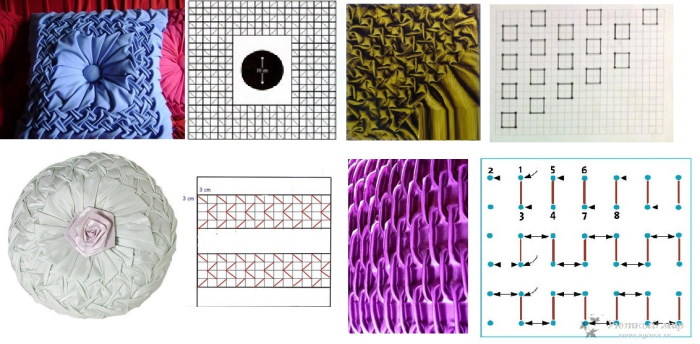
Here are some of them:
- circular patterns directed from the center to the edges of the canvas (for example, the “flower” pattern);
- linear frills that have a specific direction (“braid” or “bamboo”);
- puffs in several rows, formed on fabric without a designated direction (waffle pattern);
- ornamental patterns that form complex compositions from folds (the “heart” ornament).
All the patterns have a similar principle in their construction. Having tried to sew puffs on several ornaments, starting from simple to complex, you can easily learn to make original patterns yourself.
Some types of fabric do not even need to be outlined to use a pattern - for example, fabric with a polka dot print is embroidered with puffs directly on the dots of the pattern.
Materials and tools
Puffs on pillows, the patterns and calculations for which may differ from each other, are usually made with a standard set of materials. This significantly simplifies the task for beginner craftswomen studying this technique and trying out different patterns.
Tools required:
- Ruler – the longer, the more convenient. For large canvases, you may need a measuring tape. But since it is difficult to draw a long solid line on it, some craftswomen even use a building level (for puffs on standard pillows, a long ruler will suffice).
- Marking tool – this can be a sewing chalk, a piece of soap, a simple pencil or a fabric marker. The pattern is usually drawn on the back side, so you don’t have to erase it.
- Needle – depending on the density and type of fabric, as well as the size of the pattern, you need to select the size of the needle.
- Sewing threads - they should be as strong as possible. If the fabric is very dense, you can even use floss.
- In addition to all of the above, you will also need scissors.

For some types of patterns and difficult-to-work fabrics, craftswomen use hoops as a fixator. In the case of puffs on pillows, it is better to choose a square version of the tool, but it is worth understanding that with such embroidery an additional complication appears - constant adjustment of the tension of the fabric.
Experienced seamstresses often secure the puffs using a sewing machine. If you train yourself to make a quality hand stitch, you won't need this tool either.
Choosing fabric for creating puffs
To ensure that the puffs on the pillows are as neat and effective as possible, and also to ensure that the process of creating them is not problematic, it is important to choose the right fabric.
| The most suitable types of fabric for puffs | ||
| Knitwear | There are many types of knitwear, and basically these are fabrics that contain interwoven threads of natural and synthetic fibers. | Knitted fabrics produce the most textured folds on puffs. |
| Satin fabrics | Satin and similar fabrics are a smooth, uniformly shiny surface of the fabric. It can be made from natural silk or with the addition of synthetic threads. | Puffs on pillows made of satin fabrics look spectacular, the iridescent material gives additional volume to the drapery. In addition, such fabrics are pleasant to the touch. |
| Linen and cotton | Any natural fabrics are warm, hypoallergenic and environmentally friendly. Linen fabrics have a slight shine, and cotton fabrics are matte. | Cushion covers made from natural fabrics sometimes look plain. Puffs will help such materials to play with new forms. |
| Synthetic fabrics | Lycra, viscose, polyester, wet silk are very common types of fabric. They are cheaper than natural ones and are great for creating draperies in the interior. | Fabrics made from synthetic fibers are considered the most flexible when creating draperies. |
It is also important to pay attention to the quality of the fabric. If the fibers of the fabric spread out when pierced with a needle, creating gaps in the fabric, such fabric is not suitable for creating puffs.
The use of printed fabric is acceptable only in the case of polka dots and the creation of patterns with them in the form of flowers. Fabrics with patterns, geometric designs, small gradients will look inappropriate with drapery, so it is better to choose plain fabrics.
Calculating fabric for puffs
Puffs are created by pulling the fabric together and creating folds on it, so the material should be taken with a reserve. Therefore, before starting work, you need to not only draw up a diagram, but also make the necessary calculations. It is not difficult to do this on pillows, since the size of the cover is usually small.
The process of calculating fabric is as follows:
- The dimensions of the finished product are measured.
- The obtained result is multiplied by the fabric contraction coefficient according to the diagram.
- 5-10 cm are added along the edges for sewing the finished parts of the cover.
The compression coefficient is different for each scheme. On average, 2-2.5 times more material is taken, not counting the indentation at the edges.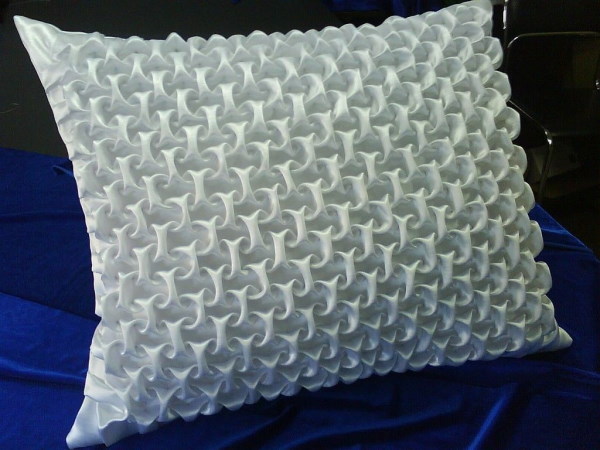
When creating your own pattern or using a fabric of a different density, you can try to collect puffs on one row, measure the result and calculate the tightening coefficient.
Technology of creation
Puffs on pillows (diagrams and calculations are usually given in the sewing description) are quite easy to make, the main thing is to understand the features of the technology of their creation.
The pattern for puffs is a grid with dots and guide lines (arrows) applied to it. The stitches can be made both from the back of the fabric and from its front side.
In the first case, you can draw the pattern on the fabric in any convenient way. Sewing from the front side involves masking the "tails" of the thread from the back or using additional decorative elements - beads, large beads, buttons.
Some tips for beginning craftswomen:
- The distance between stitches (i.e. the size of the mesh cell) depends on the density of the fabric. Light fabrics are well gathered on a fine mesh with a side of 1.5 cm. For dense fabrics, you can take 2-3 cm, depending on the desired dimensions of the finished product.
- The larger the cell side, the more fabric you will need for embroidery.
- It is better to place the vertical lines of the pattern along the grain line of the fabric. This way the folds will lie more evenly.
- The threads must be correctly selected both in density and color.
- Each fold must be secured with 2-3 knots, while monitoring the tension of the thread and the durability of the fold.
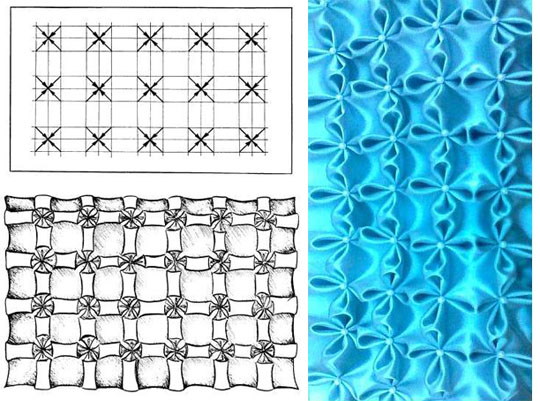
To avoid confusion when embroidering a puff pattern, it is better to transfer the pattern to the fabric in its entirety - with all the cells, dots, and arrows. For complex patterns, numbering of guide lines is often used.
Master class on making
You can make puffs on pillows yourself (you can see the patterns and calculations in more detail in the master classes below). The work on embroidering puffs is painstaking, requires attention and perseverance. Don't be afraid to unravel the embroidery if you make mistakes. The main thing in this business is to get the hang of it.
Polka Dot Fabric Puffs
As mentioned above, there is no need to draw a pattern for fabric with such a print. The folds are created with reference to the polka dots, from the front side of the fabric.
The process goes like this:
- To start weaving, select 4 adjacent peas. The thread is secured at the base of one of the peas, then stitched through all 4, forming a rhombus. The stitch size is approximately 2 mm.
- Next, the thread is pulled so that the 4 peas are attracted to each other.
- The thread is brought out to the inside and secured with several knots.
- Since the thread is now on the wrong side, you don't have to cut it, but bring it to the front of the fabric in the next pea. It's important not to forget to tie a knot.
- Using the same principle, 4 more peas are pulled together.
- Then the thread is brought out to the wrong side again, secured with several knots, and again moved to the front side to the next four peas.
The result is a pattern of puffs in the form of diamonds, at the corners of which four-leaf flowers of peas are formed. In this simple pattern, it is important not to get confused and not to miss a single pea on the fabric.
Checkerboard Pillow Puffs
For a decorative pillow measuring 35x35 cm, you will need a square piece of fabric with a side of 52 cm. 1 cm is set aside on each side for the seam.
The pattern for this embroidery looks like this:
- 5 cm are set aside from the beginning of the row, then another 2.5 cm, and so on until the end;
- using the same principle, dots are placed on each side of the square;
- then all the points are connected by straight lines;
- there should be 7 large squares in each row and 6 small rectangles;
- Small squares are formed between the rows, they should be marked with crosses.
The pattern in this form is transferred to the canvas. Since the fabric is small and the pattern has small details, you can use a disappearing marker - it will not have time to completely "evaporate" before the end of the work. The folds are formed from the back side.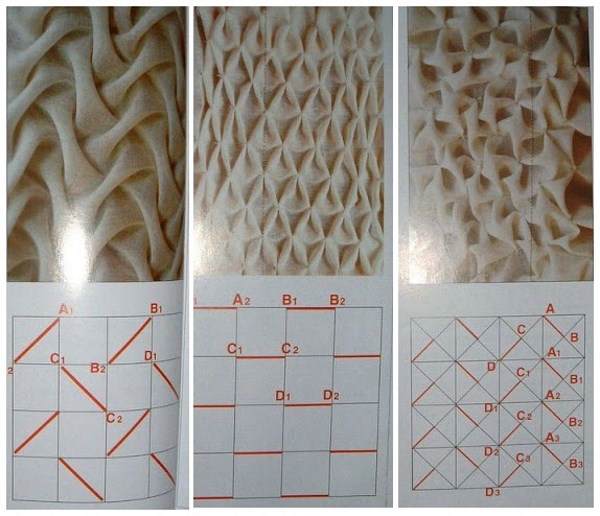
Step-by-step embroidery of puffs "Checkerboard":
- Using a thread, outline the edges of a small square with a cross. Make a stitch at each corner of the square.
- Then the thread is pulled together, gathering all the corners together. Here the thread is secured with 2-3 knots.
- You don't have to cut the thread, just pull it to the corner of the next square and then secure it with a knot.
- The following squares should be worked on using the same principle.
- The result is a fabric with flowers pulled together on it, each with 4 petals.
- Next, the petals are sewn together using regular neat stitches. Two petals are sewn opposite each other.
- The stitches should form an unfinished cross around the large puff square.
When all the squares are gathered into folds and additionally stitched, the front side will have a pattern of large convex squares, the same sunken squares and small rectangles connecting them.
To ensure the pattern looks neat, it needs to be ironed before sewing it to the other parts of the pillowcase.
Pattern for puffs "Braid"
This pattern of embroidery of puffs will look especially impressive on large decorative pillows. Large, soft folds will perfectly fit on fabrics made of natural materials, creating a cozy atmosphere in the room with their drapery.
The diagram is drawn up as follows:
- the canvas is divided into squares (the size of the sections and their number in a row can be chosen any, the main thing is that it must be an even number);
- in the first row, every second square is crossed out in the direction from the upper left corner to the lower right;
- the direction of these squares is indicated by an arrow;
- in the next row, the squares are crossed out in the same way, one after another, but starting from the first;
- the direction in this row is from the lower left corner to the upper right, supplemented by an arrow;
- then the rows alternate.
The stitching of the folds is done according to the same principle - the thread is secured with a knot at the beginning of the pattern, a stitch is made, pulled together, secured with a knot. All stitches are made from the back of the fabric. The final pattern looks like large intertwined folds.
Creating a wavy puff on a pillow
The tightening coefficient on such a pattern is approximately 1.5. The waves are sewn from the wrong side. In the end, the fabric is slightly deformed, forming not a square, but a rhombus. The resulting pattern of puffs can be slightly stretched in different directions or, conversely, tightened - then the rhombus will become narrow.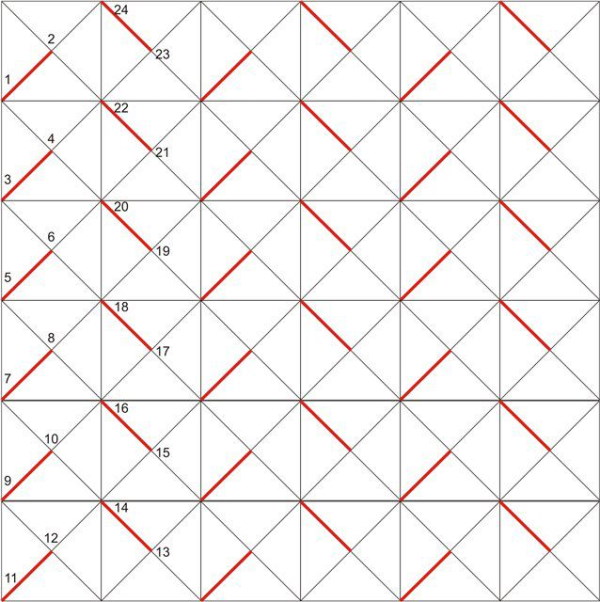
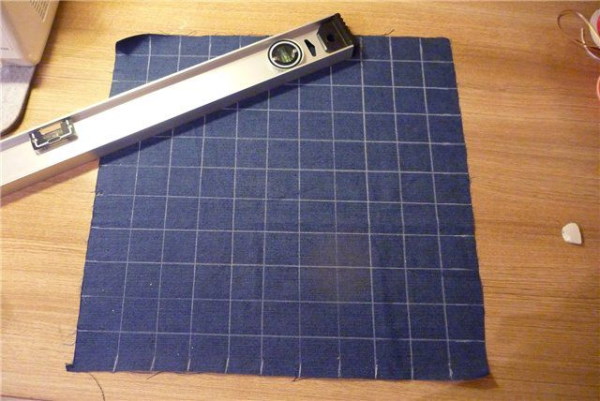

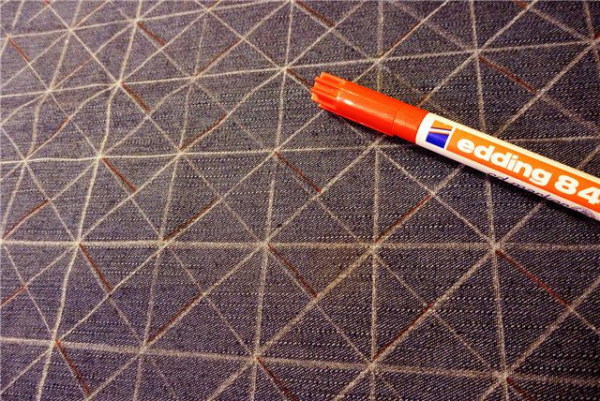
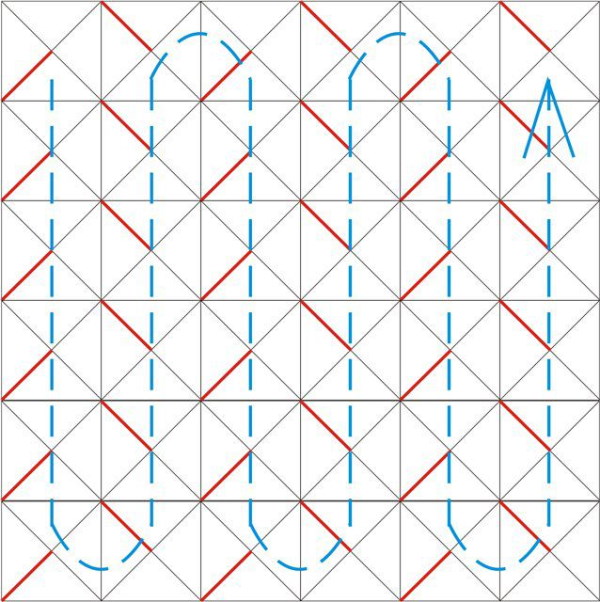
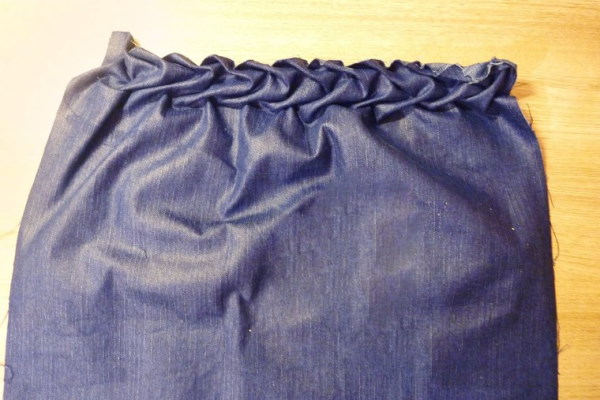
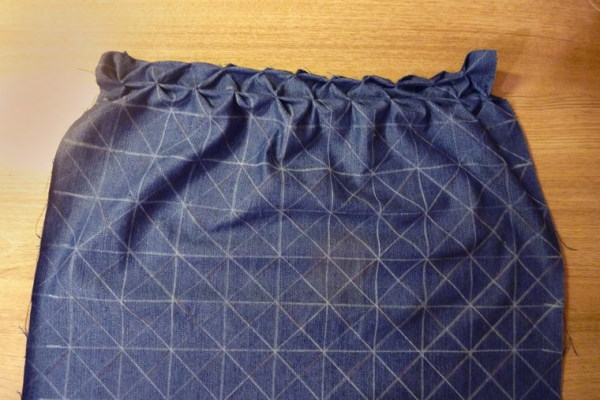

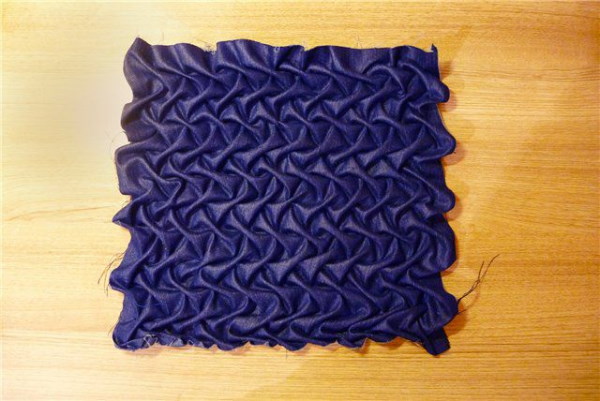
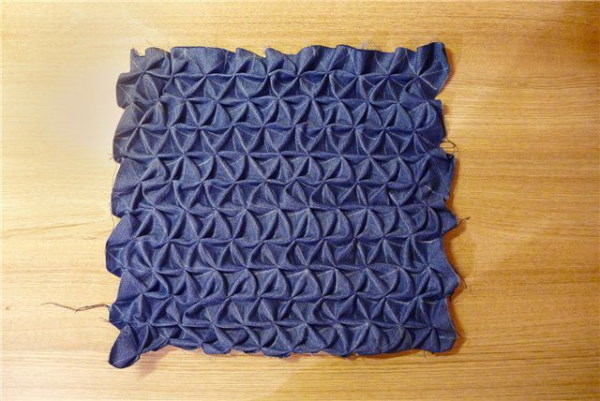
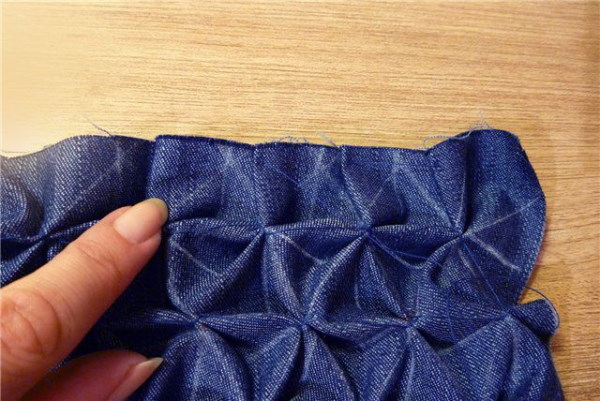

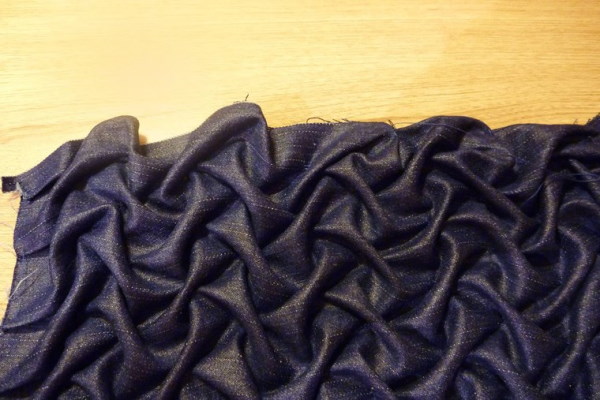
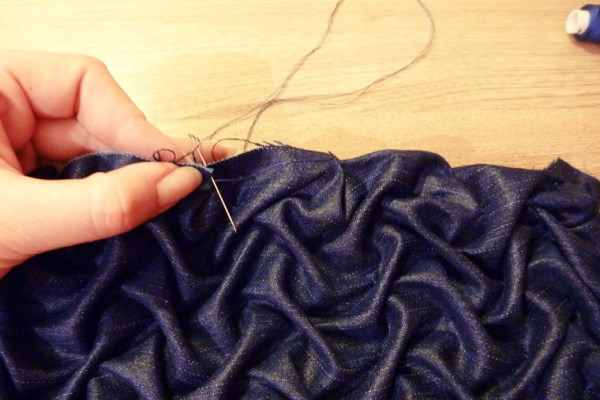

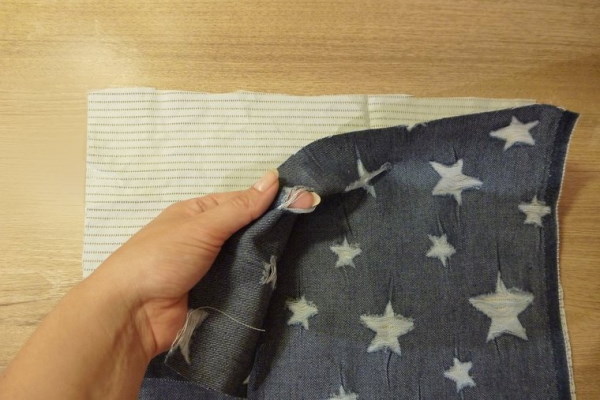
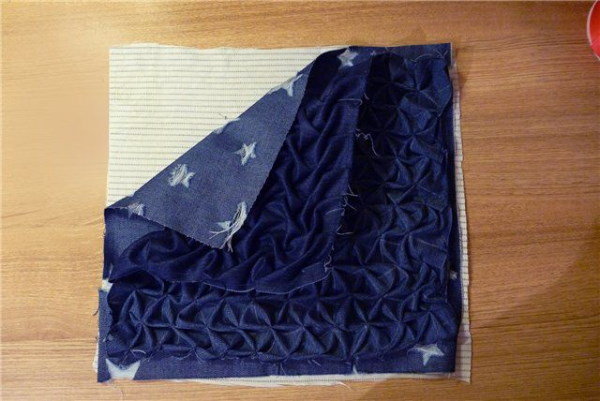
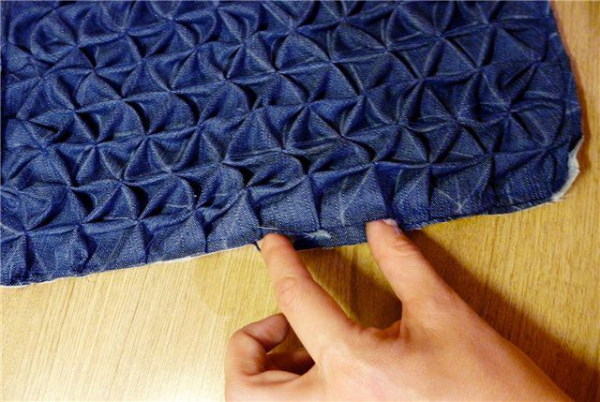
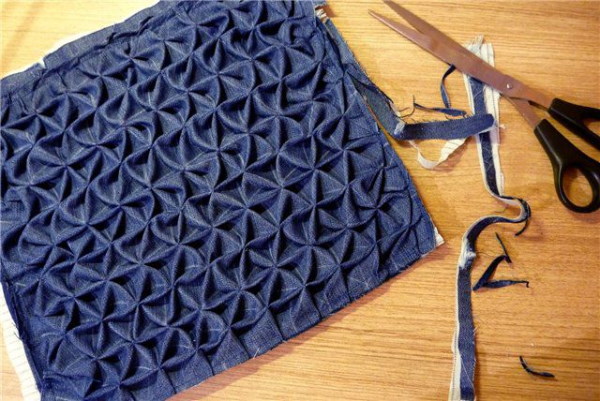
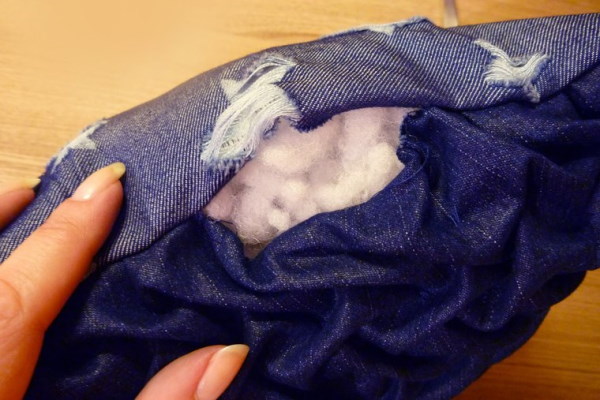
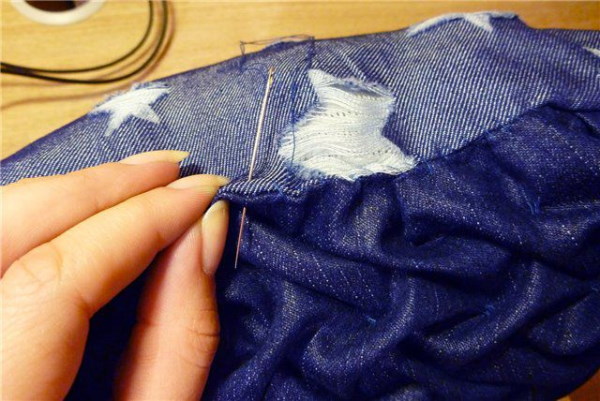

Embroidery pattern:
- the canvas is divided into equal squares;
- there must be an odd number of cells in rows and columns;
- in the first column, every other cell is crossed out, starting from the first one;
- tightening direction – from the lower right edge to the upper left;
- the next column is skipped;
- in the third column the cells are crossed out in the same direction;
- thus the columns alternate.
According to this pattern, you need to sew the folds in columns, not in rows. It is more convenient to move from top to bottom. The order of stitches is exactly the same as in the previous lessons.
The finished pattern looks like intertwined waves or small bows. You can make a diamond-shaped pillow from such a puff, or sew it onto a square base, slightly trimming the long edges of the diamond.
Puffs according to the "Tablet" scheme
The pattern consists of guide strips parallel to each other. The horizontal tightening coefficient is 2.3, and the vertical tightening coefficient is 1.1. In this case, only stripes, not squares, will be drawn on the pattern and on the fabric.
The diagram is constructed as follows:
- you need to start from the first row;
- there must be an odd number of horizontal stripes;
- the stripes alternate every other one;
- in the second row, the stripes start from the second, that is, they cover the voids of the first row;
- the third row duplicates the second;
- the fourth and fifth rows duplicate the first;
- then two identical rows are alternated according to the pattern;
- The diagram ends with one single row.
The folds are sewn together on the front side. In this case, it is better to use a disappearing marker to transfer the pattern. It is more convenient to start sewing from the lower right corner. Since the knots are formed on the front side, you must not forget to take the thread to the inside and secure it there, leaving the tail invisible.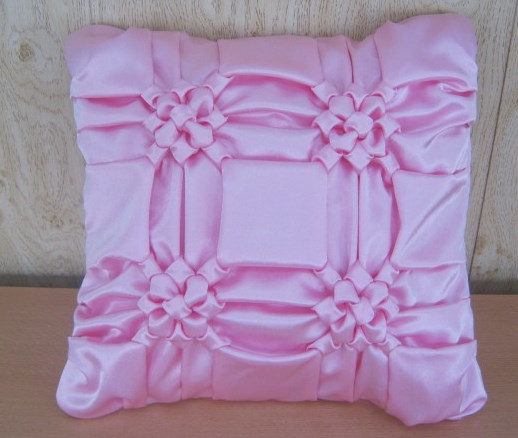
The finished pattern looks like alternating rows of squares and triangles. This pattern is also called "Candy", since the resulting geometric figures in columns are folded into something like a candy in a paper wrapper.
Puffs are one of the most interesting types of fabric drapery. It looks spectacular both on clothes or accessories, and in home decor. Almost any type of fabric is suitable for creating this drapery, the main thing is that it does not have different patterns. Having carefully studied the patterns, as well as having made accurate calculations, you can use this technique on pillows. Do-it-yourself decor will give any home more coziness and originality.
Video about puffs on pillows
Amazing pillow puffs:
